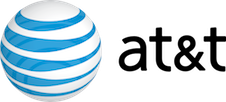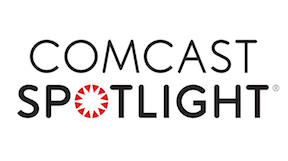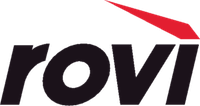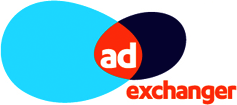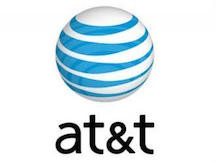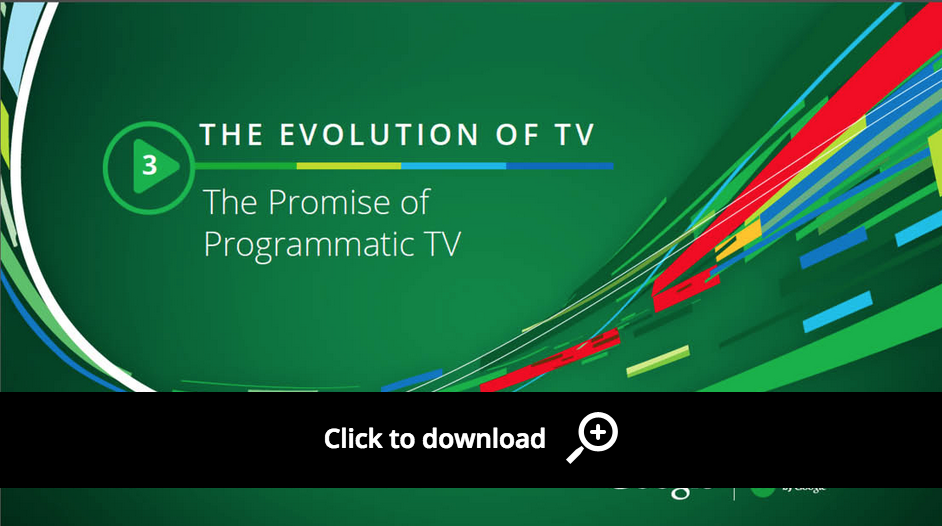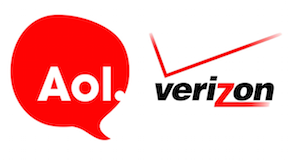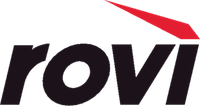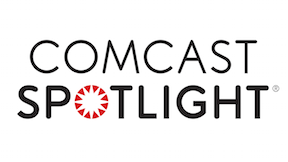Newsroom
Program Areas
-
Blog
FreeWheel Strengthens Its Programmatic Video Capabilities With the Acquisition of StickyADS.tv
FreeWheel announces acquisition of StickyADS.tv, a leading video SSP, bringing together best in-class traditional and programmatic sales capabilities, architected for the TV industry.
(NEW YORK, NY– May 9, 2016) - FreeWheel, a Comcast Platform Services company and leading provider of premium video ad management solutions for the world’s largest media and entertainment companies, today announced the acquisition of StickyADS.tv, a leading video supply-side platform (SSP), that offers premium publishers software to build, run and operate their own private exchange. The acquisition will create an end-to- end solution enabling clients to manage video inventory across all screens and access demand from any demand channel, while ensuring a brand-safe, TV compliant experience. “We are very excited to make this announcement. We are bringing together two companies who deeply understand the opportunities for the ‘New TV’ ecosystem on both sides of the Atlantic,” said Doug Knopper, co- Founder and co-CEO, FreeWheel. “StickyADS.tv has been a preferred SSP partner since September 2015 and in that short time we have been thoroughly impressed by both the quality of their platform and the knowledge of their team.” Since its inception, FreeWheel has remained steadfast in its responsibility to provide industry leading technology solutions for TV Programmers/Networks, MVPDs and select Digital PurePlays to unify their advertising businesses across screens and currencies and make automation work safely for premium video across all environments. The addition of StickyADS.tv strengthens FreeWheel’s capabilities to deliver an end-to-end automated ad technology platform that enables publishers to maximize monetization of their own video inventory across traditional direct sold and market demand sources while ensuring full control, compliance and creative safety. “Our clients’ need to support automated sales has drastically accelerated over the last 18 months. We believe StickyADS.tv brings best-in-class SSP technology, specifically their focus on private exchange capabilities that put the publisher in control. We believe the combination of our platforms will deliver the solutions our clients need to thrive,” said James Rooke, Chief Revenue Officer, FreeWheel. StickyADS.tv, headquartered in Paris, supports the advertising businesses of some of the biggest broadcasters in Europe, including TF1, France Télévisions, and M6. In addition, StickyADS.tv powers the advertising business of other premium publishers like Spiegel, Corriere della Sera, The Economist, and La Place Media, and manages over 90+ server-to-server buy side connections including all the market-leading Demand Side Platforms (DSPs). --- Full article attached below. -
Real-time Bidding (RTB) is a way of transacting media that allows an individual ad impression to be put up for bid in real-time. This is done through a programmatic on-the-spot auction, which is similar to how financial markets operate. RTB allows for Addressable Advertising; the ability to serve ads to consumers directly based on their demographic, psychographic, or behavioral attributes. The Real-Time Bidding (RTB) Project, formerly known as the OpenRTB Consortium, assembled technology leaders from both the Supply and Demand sides in November 2010 to develop a new API specification for companies interested in an open protocol for the automated trading of digital media across a broader range of platforms, devices, and advertising solutions. At the time Programmatic had only accounted for 4% of the display advertising market. By 2017, RTB is expected to account for 29% of the digital mix (source: eMarketer March 2013). This group continues to create open industry standards that ensure all parties, buy and sell side alike, can transact RTB at scale and build future industry innovation. The mission of the OpenRTB project is to spur growth in Real-Time Bidding (RTB) marketplaces by providing open industry standards for communication between buyers of advertising and sellers of publisher inventory. There are several aspects to these standards including but not limited to the actual real-time bidding protocol, information taxonomies, offline configuration synchronization, and many more. This document specifies a standard for the Real-Time Bidding Interface that has grown out of previous OpenRTB collaboration on the “block list project” and the “OpenRTB Mobile” project. These protocol standards aim to simplify the connection between suppliers of publisher inventory (i.e., exchanges, networks working with publishers, and sell-side platforms) and competitive buyers of that inventory (i.e., bidders, demand side platforms, or networks working with advertisers). The overall goal of OpenRTB is and has been to create a lingua franca for communicating between buyers and sellers. The intent is not to regulate exactly how each business operates. As a project, we aim to make integration between parties easier, so that innovation can happen at a deeper-level at each of the businesses in the ecosystem. --- For more information, visit http://bit.ly/1s7XdHL (link is external)
-
Blog
AT&T Data Patterns Gives Advertisers New Insights on Out-of-Home Media
Clear Channel Outdoor Americas will be first to offer advertisers access to improved audience location analysis
A new service from AT&T (link is external) will allow outdoor advertisers to better understand audience demographics passing nearby. The anonymous and aggregated group insights will help advertisers to better plan their campaigns and place ads that are more relevant to the audiences that see them. Clear Channel Outdoor Americas (link is external), one of the world’s largest outdoor advertising companies, will be the first to offer the benefit of AT&T Data Patterns – Out of Home Media to its clients. Advertisers can learn the number of people who pass by an advertisement location and also learn statistics about the anonymous group, such as age and income ranges, genders, ethnicity and household size. Currently, outdoor ad impressions are most often measured through traffic and pedestrian counts and U.S. Census data. This method is proven, but time-consuming. “Advertisers have long wanted up-to-date, dynamic data for outdoor media, so they can plan and measure outdoor campaigns like they do with other types of advertising,” said Sarita Rao, vice president of AT&T Data Patterns. Clear Channel Outdoor Americas also announced its intent to use AT&T Data Patterns in its public service advertising programs for non-profit and government organizations. Reaching the right audiences at the right time can be critical to improving public health and safety. “This technology brings digital-quality metrics to our physical inventory,” said Scott Wells, CEO of Clear Channel Outdoor Americas. “With this sophisticated analysis, it is now possible for advertisers to plan OOH campaigns with the same kind of precision they’re used to in digital and TV campaigns.” --- See more at http://soc.att.com/24BWcWa (link is external) -
TV Advertising Your Commercial on the Biggest Networks Television advertising solutions marry the unique power of TV as a branding platform with the technology to efficiently target a message to the correct consumer, which enables advertisers to focus in markets that matter most. Digital Advertising Bring Your Message Online Now advertisers can utilize cutting-edge technologies to connect online with millions of potential customers more efficiently and with pinpoint accuracy by delivering contextually and geographically targeted messages. Multi-screen Advertising Mix and Match for Maximum Impact Comcast Spotlight’s multi-screen solutions include television and online advertising to integrate an advertiser’s message to potential customers in a more engaging and impactful way. --- Geographic Targeting: You can target the right message to the right customers in just the neighborhoods that matter most to your business. Demographic Targeting: Reaching audiences on top TV networks and leading digital destinations ensures your business engages with customers interested in your product or service. Reaching More of the Right Viewers: Now your business can reach more customers than ever, whether they get their TV or internet service from cable, satellite or telephone companies. Interactive Television (iTV): Your business can combine the reach of TV with the interactivity of the Web and invite customers to engage directly with your advertising. --- For more information, see the attached PDF.
-
Ad Optimizer empowers inventory owners to sell custom audiences that are scalable, relevant and improve advertiser performance. It enables the full utilization of available viewership data to evaluate, differentiate and extract more value from TV inventory. Ad Optimizer leverages an end-to-end predictive analytics engine to identify specialized audience segments and forecast viewership. Inventory owners can then use Ad Optimizer to build and execute audience-based media plans to reach those segments and optimize the value of their TV inventory while improving operational efficiency. Data-agnostic, Ad Optimizer is able to process raw data from millions of set-top boxes and panel sources as well as target data from multiple third-party consumer sources to fuel rich segmentation and optimization, and forecast viewer behavior and audience impression inventory. Benefits: Build and execute audience-based media plans. Enjoy fully integrated, end-to-end media planning and delivery, including custom, optimized media plan proposals. Increase the value of audiences and extend advertiser reach. Maximize inventory and revenue across multiple channels. Leverage a data-agnostic application, drawing from lifestile, billing, viewership and behavioral data. Improve business performance through closed-loop post-analysis. Measure audience and reach. Access optional support for programmatic buying interfaces. Rovi Media Sales Consumers are spending more time with more media, across devices. With fragmented TV viewing and so many content options, it takes more time for consumers to find something to watch than ever before. Rovi Advertising is uniquely positioned to reach consumers as they look for content and capture their attention as they make entertainment choices. Rovi Advertising enables advertisers, agency planners and buyers, content providers and marketers to reach consumers in “search and discover mode,” when they are highly receptive to advertising. Our interactive display ads appear as content choices in smart TV user interfaces/applications as well as the interactive program guide (IPG), which captures up to 13 percent of viewers tuning away from commercials.* This ideal placement makes Rovi Advertising a perfect complement to today’s TV media buys. With more than 20 years of experience executing advanced advertising, we can help you align your campaign elements to drive awareness and revenue. With viewers numbering in the millions and ads creating billions of impressions, Rovi Advertising can help you reach a growing audience of receptive consumers where entertainment decisions are made. Advanced Advertising Our interactive banner ads in the guide and other interfaces have the ability to drive instant research on products and services, as well as live and C3 tune-in. Optimally placed and providing significant share of voice, the ads lead consumers to longer-form branded content or rich-media branded destinations. We also offer video advertising opportunities on TotalTV (link is external), an online guide to TV programming. Rovi Advertising is available in the U.S., Canada, the U.K., Germany, Spain and other global markets. Receptive Viewers With inventory in service provider IPGs and on connected TVs and Blu-ray players, Rovi reaches consumers while they are searching for something new to watch. They notice ads and find them valuable. Your ads can be their content choice. Rovi Ad Insights With multi-platform campaigns, it’s hard to measure success using conventional methods. Rovi Advertising features a robust analytics engine that allows us to provide detailed reports on campaign performance. With one of the largest samples of return-path data from set-top boxes plus census-level information from digital devices, Rovi Advertising provides proof of performance and campaign diagnostics. Rovi Customers Globally recognized brands turn to Rovi. Every day around the world, millions of consumers encounter Rovi technologies when they use their favorite entertainment apps, devices and services. Rovi helps the TV service providers, hardware manufacturers, streaming media services, broadcasters, content producers and advertisers behind those services, applications and products provide better entertainment discovery experiences and maximize the value of content and audiences. América Móvil Armstrong AT&T Charter Spectrum DISH Network EchoStar Facebook Grundig Arcelikk Mediacom Megacable Microsoft Nuance Oldies.com Panasonic Samsung Shazam SoundHound Trans World Entertainment --- For more information about Rovi, visit http://www.rovicorp.com (link is external)
-
Blog
Charter Communications Accelerates Digital Marketing Success Tealium Omnichannel Marketing
Driving results in a defined territory required an aggressive mix of digital solutions. Learn how Tealium iQ made the difference.
Charter Communications’ business objectives are like many Fortune 500 companies: create innovative products and services, delight customers, and drive faster growth. The difference is that while many companies operate in a national or even international market, Charter operates in a defined territory that includes 12 million homes in 29 states. Within that specific market, Charter masterfully drives customer acquisition and product penetration, and is now one of the largest cable operators in the U.S. Charter currently has six million customers and, in its most recent year, grew by 8.7 percent to achieve $8.4B in annual revenue. High-quality service and product innovation, combined with data-driven marketing, accounts for much of that success. Matt Reeves, senior manager of digital marketing at Charter, explains the increasing role his unit plays: “From 2011 to 2014, e-commerce grew from 16 percent to 25 percent of company sales. Digital marketing gives us tremendous agility and speed in reaching our audience. To take full advantage of that velocity, we rely on the Tealium iQ (link is external)™ tag management system for the fastest deployment of third-party marketing and analytics tags. Tealium allows us to be more creative in designing, implementing and targeting campaigns, and also gives us the ability to quantify results in real time.” Too Many Vendor Tags, Not Enough Resources Earlier in 2014, Charter began a rollout of 60 Mbps Internet speed with expectations for an all-digital upgrade across its 29-state territory by year’s end. The challenge for the company’s digital marketing team was building customer awareness about new game-changing services and informing customers of the advantages Charter presents over the competition. “Our primary focus is acquiring new customers,” Reeves says. “We consider every single home a potential customer, and we rely heavily on search engine marketing and display advertising to build awareness within those targets.” Reeves says that, in the past, deploying tags for new online marketing or analytics solutions required hard coding pixels. It needed a significant level of effort from IT and third-party development resources. Digital marketing needed a solution that would allow the team to be more self-sufficient, deploy tags faster, and ensure scalability to support the increasing number of Charter’s digital marketing initiatives. Tealium Omnichannel Marketing Tealium enables you to leverage the power of your first-party data and create more compelling, relevant omnichannel marketing experiences. With Tealium AudienceStream, the leading omnichannel customer segmentation and action engine, robust profile enrichment capabilities are combined with the ability to take real-time, relevant action. Real-Time Profile Enrichment: Tealium’s omnichannel enrichment technology marries your existing AudienceStream visitor profile data with your visitor data from other customer data sources in real time – continually enriching your visitor-based segments and triggering new marketing actions. Integration Ecosystem: Tealium’s integration ecosystem is made up of deep, native integrations with leading email, marketing automation, online advertising, social, and customer relationship management (CRM) platforms, enabling real-time action within the marketing technologies you already use. Visitor Stitching: Typical analytics data often shows cross-device visitor interaction as coming from multiple people across multiple sessions, but in reality, it is likely that those visits are from just one visitor using different devices. Tealium’s unique visitor stitching technology can track visitor IDs across device use with any number of unique identifiers, and when a known ID is matched, visitors and behaviors are automatically stitched together. Not only will Tealium AudienceStream proactively seek matching identifiers across all known visitor profiles, it will combine them in real time and make the updated profile immediately available for action. Offline Data Ingestion: Tealium allows you to onboard offline data, such as call center and point of sale information, and combine with your online data to provide a consistent, connected experience regardless of where your visitors are engaging with you. AudienceStream can automatically ingest visitor data collected off-site or offline and map that data to your existing visitor profiles, transferring channel-specific data on a periodic basis to streamline a once manual and tedious process of bringing together cross-channel data. --- For more information visit, http://bit.ly/1WXxixW (link is external) and http://bit.ly/1SDdXgc (link is external) -
Scrap cat videos. Google wants a piece of the $70 billion linear TV ad pie – of which $300 million-plus and growing is addressable. As such, the tech giant unveiled a bunch of TV-related products and updates Wednesday at the National Association of Broadcasters meeting in Las Vegas. Announcements included the addressable TV product DoubleClick Dynamic Ad Insertion (geared squarely toward TV broadcasters and distributors), an update to DoubleClick for Publishers (DFP) that keeps competing advertisers from appearing consecutively in the same TV ad pod and improved search for TV shows. At the top of the stack was the intro of DoubleClick Dynamic Ad Insertion – a product that places Google in direct competition with video ad platform FreeWheel, which Comcast acquired (link is external) in 2014. With Google in the fray, the gauntlet is down in a serious way. “By creating individual streams for every viewer using server-side ad insertion, we are able to deliver a better, more personalized viewing experience that looks and feels as seamless as TV today,” wrote Daniel Algere, president of global partnerships for Google, in a blog post. “Not only will this work for both live and on-demand TV, but it works across directly sold and programmatic.” Google put the technology to work over the past year through a series of beta tests with French TV programmer TF1 and Fox News. The broadcasters used DoubleClick Dynamic Ad Insertion to embed ads dynamically into live “tentpole” content, including the Rugby World Cup finals and the Republican presidential debates. Google is also expanding DFP by creating “smarter TV ad breaks” for cross-screen and video ad serving for TV clients like AMC, Cablevision and over-the-top powerhouse Roku. Marketing lingo aside, “smarter TV ad breaks” is normal in linear broadcasting. It’s basically a system that separates two similar advertisers – so Pepsi and Coke, for instance, won’t have adjacent ads in a single commercial pod. The DFP expansion comes soon after Facebook’s LiveRail (link is external) exited the video ad-serving business. Roku, which used LiveRail until a few months ago, “appears to have fully completed transitioning just in the past few weeks” to Google, said an AdExchanger source speaking anonymously because of their relation to both companies. Google’s entrance into TV monetization, say industry insiders, is about more than capturing video market share from Facebook. Another AdExchanger source said Google’s push for premium video on YouTube was just the “Trojan horse” it needed to pursue more TV dollars. “All MVPDs realize that a tighter relationship with [tech and consumer-based companies like] Google, Facebook and Amazon is the rising tide that lifts all boats,” that source said. “They’re making very tangible, touchable proof points [about why they should be your TV tech partners].” --- Full article available at http://bit.ly/1U73NJ4 (link is external)
-
Blog
Introducing Roku Audience Solutions
We believe all TV will be streamed, and with it, TV advertising
The Roku platform now natively integrates advertising capabilities that combine the best of both digital and TV advertising. We call it "Roku Audience Solutions". It enables Roku channel partners to deliver more effective advertising to their audience. And, it creates new opportunities for brands to connect with next-generation TV viewers. TV, Meet Digital TV is changing in profound ways. We’re headed for a world in which all TV will be streamed, on-demand, and personalized. With this transition, the “physics” of TV advertising is changing, too. Viewers are migrating out of traditional platforms. 2014 witnessed the first material losses for traditional TV distribution and viewership. People still love TV. They’re just doing it on their own time. 222K cable subscribers lost as of Q3 2014, more than all of 2013 Ratings dropped 9% in 2014, compared to 3% in 2013 1 in 3 US adults own a connected TV or streaming device Viewer growth is in streaming. Delivery of video ads via free, ad-supported streaming grew 236%, beating tablets for the first time and gaining rapidly on smartphones. We still love the big screen. Everyone’s watching TV on their smartphones now, right? Wrong. When viewers are home, screen size matters. --- Learn more about Roku by visiting http://bit.ly/1Uc9sh5 (link is external) -
Blog
AT&T, Videology Ink Programmatic TV Ad Pact
AT&T Launches Automated Video Inventory Platform (VIP)
Establishing a key foothold in the world of programmatic TV, AT&T said it has launched a automated, self-service private marketplace for linear TV advertising in partnership with Videology. AT&T announced VIP Thursday at the Videology “Full Frontal” Upfront event. AT&T’s data-driven, programmatic system, called the Video Inventory Platform (VIP), will work off a web-based interface that aims to simplify targeting and planning for TV advertisers and ad agencies. VIP, it added, will enable those partners to build campaigns using the AT&T AdWorks national TV ad inventory on all cable networks and dayparts across 26 million homes in all 210 DMAs. Targeting, AT&T said, will be determined using proprietary aggregated and anonymized data and third-party sources. Signaling that it’s already on the programmatic TV onramp, AT&T said, in Q2, it will start to look to bring on a trial agency or brand to “run several campaigns across the platform, and plan to roll out the product more widely later this year.” AT&T’s VIP will initially include TV Blueprint inventory, the aforementioned 26 million homes coming way of DirecTV and U-verse TV (AT&T acquired DirecTV last July (link is external)), and, in the future, could include additional inventory sources such as addressable TV, TV Everywhere and digital video. Among AT&T’s digital-facing activities, it plans to launch three over-the-top services in Q4 2016 (link is external). --- Visit http://bit.ly/21TLdte (link is external) for more information. -
Set-top Box market should be open, but consumers and privacy protected, CDD tells FCC
Calls for Safeguards for sensitive data, including protecting youth, seniors, and use of ethnic/racial information in FCC"s Navigational Device Proceeding
The Center for Digital Democracy (CDD), which works to empower and protect consumers in the digital marketplace, endorses the Federal Communications Commission’s (FCC) important proposal to provide both choice and competition in the provision of navigational devices for video and related content. CDD strongly believes that the FCC should proceed with its plan to allow third parties to build and sell navigational devices. We support giving these developers/providers access to the information proposed in the NPRM, including Service Discovery, Entitlement, and Content Delivery data. For decades, a handful of powerful cable—and now also telephone—companies have held a monopoly over the design, availability, and use of set-top boxes. This has resulted in greater costs to subscribers, including an especially unfair burden on low- or limited-income consumers. The set-top stranglehold has impaired competition and programming diversity, and has undermined consumer privacy. --- Full PDF of filing attached. -
How the Integration of Marketing Channels Enables Consistent Consumer Recognition for Cross-Channel Advertising: In this, the second of our MoneyAds Mentor Series, we look at how modern advertisers strive to create connected experiences for consumers and foster trust, all in (near) real time. Recognition – recognizing consumers across channels, offline or online – is the foundation for this, and it all begins with connected data to drive connected experiences when and where your audience is most receptive. While recognition may seem easy to achieve, the ability to do this across channels, devices and media is highly complex. The good news is, with more places to reach consumers, brands have the opportunity to drive expanded reach and greater relevance with ad technology partners. As consumers, we live multi-channel lives and often interact with our favorite brands through a myriad of channels, and nowhere more so these days than on websites, on our mobile phones, or wherever we go to watch TV or videos. Our shift in behavior has impacted marketing so much that when recently asked, 28 percent of marketing leaders said they plan to reallocate resources to prioritize an omni-channel engagement strategy. How can advertisers begin to execute such a strategy? A brand’s journey must start with its own invaluable customer data to recognize consumers consistently across channels, while respecting their need for privacy and discretion. While this concept has been table stakes in the offline world, the digital world has presented a slew of hurdles, such as rapidly evolving technology and platforms and the format of the data itself. The challenge then lies in the consistent application of consumer data across channels. After all, if recognition drives connected experiences, then consumer data matching drives the connection of data. Key takeaways: A cross-channel view of the consumer is the foundation for true multi-channel advertising. After all, you can’t target who you don’t recognize. Carefully craft the mix of digital channels to create connected experiences for your intended audience. Adopt recognition and matching best practices that deliver the highest degree of accuracy and reach. Expertise in recognition across time and channels is essential. Select an ad tech partner that is integrated with a large network of partners and publishers, especially those most important to your brand, to allow you to effectively leverage your customer data and boost your ability to reach consumers through their channel(s) of choice. Recognition across channels does not mean annoying people across channels. Ensure you and your ad tech partners always use data ethically to protect consumer privacy. I’m Supposed to Work with Who? Study after study shows the value of multichannel marketing and how consumers who engage with a brand through multiple channels spend much more than single-channel consumers, with some estimating a 4X difference between the two groups, with others finding an average of $9 in incremental sales for every $1 of online advertising. As enticing as that value proposition is, for marketers tasked with creating the connected experiences needed to reap these benefits, they must make sense of an ecosystem that looks like this: --- Full article available at http://bit.ly/1LeEYVW (link is external)
-
It’s no secret that information is consumed differently – through new channels and outlets – with viewers demanding personally relevant content the instant they want it. Catching a customer’s attention is more difficult than ever before, and standing out in this new environment is a constant challenge. With so many choices, it is vital for media & entertainment companies to know who their viewers are so they can engage them with the right content and the right advertising through the right channels, and to provide their advertisers with maximum exposure to target audiences with minimum spend. Alteryx allows you to prep, blend and analyze internal and third-party data sources in a repeatable workflow, to better understand and address viewer and advertiser expectations. You can then perform analytics – predictive, statistical and spatial - to uncover insights that help you make strategic decisions about content distribution; uncover additional types of services to offer and where to offer them; and optimize media plans, automating and iterating them as new data becomes available. Finally, you can share results across your organization and with your advertisers, allowing them to meet viewer preferences and demands. With self-service data analytics from Alteryx, you can: Prep and blend demographic, consumer, spatial and attitudinal data to forecast demand – for shows, titles, games or concert attendance, or for specific viewer or attendee segments and specific locations Create optimal media plans that minimize spend for advertisers, and maximize reach for target audiences Better understand your viewers, so you can target them with the right content in the right channel, and your advertisers can target them with the right message Make smarter location decisions by creating trade areas based on customer loyalty data, previous attendance and more Calculate and adjust ad pricing and sponsorship fees quickly, based on census data, customer segmentation and demographics Media & Entertainment Analytics for... Media An overwhelming amount of content is available to customers through cable, social media, mobile advertising and other channels. Ascontent viewing habits have changed, so has the way advertisers interact with potential customers and their standard approach to media planning. With Alteryx, you can blend set-top box data, viewerdemographic data, social media data, and more, to better understand your audience and their preferences. Leveraging statistical analysis, you can minimize advertiser budget spend and maximize viewership. Via a simple drag and drop workflow environment, you can leverage spatial data to calculate drive times and trade areas to help your advertisers understand where to advertise for target demographics and effectively reach their ideal audience with personalized messages. You can quickly understand available ad inventory and costs to do ad buys, and easily monetize ads offered on specific channels. --- For more information, visit http://bit.ly/1SNQVlK (link is external)
-
In August 2014, Facebook launched its cross-device targeting tool for digital ads, as reported by AdExchanger (link is external), which sent a clear signal that the social media giant is becoming accepted by marketers as a way to measure and reach Internet users across smartphones, tablets and desktop computers. Cross-device targeting occurs when a brand identifies a visitor to its website and subsequently serves an ad to that consumer when they are browsing elsewhere on another device. If a person is perusing Kate Spade handbags from her work desktop on the Nordstrom website, for instance, she may see a Kate Spade banner ad for a sale on her mobile Pandora app. The goal of cross-device targeting is to more closely follow the new customer journey (link is external), requiring multiple touches to influence purchasing decisions. Here are three ways the tool will change your digital advertising strategy: 1. It Will Force Cookies to Evolve Into Something Better For years, cookies have served as de facto online advertising markers, enabling marketers to identify and recognize shopper behavior. But today, as non-Web-based digital activities on mobile phones, apps and other IP-enabled devices continue to expand, cookies are becoming less useful. In addition, as MediaPost (link is external) points out, the looming "Do Not Track (link is external)" movement worldwide may ultimately force marketers to rely on other tools. Cross-device targeting will require a move from total reliance on cookies to other identification tags across all digital screens, operating systems, devices and browsers. Log-in data linking — which gives consumers the option to log in to your website using their Google, Facebook or email credentials — could be the most viable way to solve cookie problems. 2. It Will Make Social Media Advertising Even More Vital According to Facebook's latest research (link is external), communicating via Facebook and checking email are the two most popular behaviors by mobile users, and consumers do both constantly, throughout the day. In a survey of marketers, Ad Age (link is external) and RBC Capital Markets revealed that 84 percent of respondents use Facebook ads for marketing, with Twitter and YouTube rounding out the top three. Of these, 36 percent indicated that the ROI on mobile ads for Facebook was "much greater" or "somewhat greater" than its desktop offering. Now that tools exist to help marketers get even more granular on ROI, expect mobile social media budgets to increase. Adweek (link is external) is forecasting a 70 percent increase in social ad spending, and not just on Facebook — Instagram, Twitter and Snapchat will also be big players. --- For more information, visit http://bit.ly/1XxDLNW (link is external)
-
Renewed discussions about interruptive advertising and its residual effects (e.g. ad blocking) have elevated the need for the industry to rethink the relationship between ads and content. AOL’s focus has been to develop more premium advertising experiences and invest across a number of teams and technologies to deliver more beautiful, engaging and relevant advertising experiences, while lessening the load of ads on pages and streamlining the back-end technologies that enable these experiences. Since 2010 – when we launched our first Project Devil ad format – we’ve expanded our premium solutions across mobile and video, and helped infuse programmatic into the creative process (through our launch of ONE by AOL: Creative), automating the grunt work and allowing creatives to focus on, well, creativity. Today, we are taking another step in advancing the growth of premium advertising, and are excited to announce the expansion of AOL’s premium formats on MSN.com (link is external), as well as greatly scaling programmatic access of premium formats to tens of thousands of mobile applications. This development brings a number of new mobile-centric opportunities to advertisers who want to engage with audiences on a much deeper level with more data-driven, interactive formats. As part of our vision of an open ecosystem, we believe that continuing to partner and integrating with first- and third-party solutions helps to simplify the process for advertisers and gives them new ways to think about how to engage with audiences. Included in this expansion are: MSN: Halo (link is external), Devil (link is external), Billboard (link is external), Loft (link is external), and Devil Full-Page Flex (link is external) ad formats are now available on MSN’s sites in the US, Canada, Japan and Spain, and will be available in the UK, France, Germany, Italy, and Brazil in March. AOL’s linear video premium formats (link is external) will also be available in these markets later in Q1; Millennial Media: The Devil Full-Page Flex (User-expand) (link is external) ad format will be available on more than 65,000 mobile apps globally in Q1; ONE by AOL: Display: Devil Full-Page Flex and Mobile Interstitial (link is external) ad formats are available today to be purchased programmatically, and will get increased mobile in-app scale in early Q2 through integrations with MoPub and ONE by AOL: Mobile. Through these roll-outs, AOL’s reach for in-app rich media will be increased by an estimated four-times. --- Learn more at: http://aol.it/1Xt9HTC (link is external)
-
Media is complex. Time Warner Cable Media makes it easier for you with the best resources across screens. The average American spends 60+ hours a week across all devices. Your needs come first. Unlike some media partners who are pressured to sell their products, we are screen-agnostic. As the leading provider of full service local marketing solutions, we continually invest on your behalf. --- For more information, visit http://bit.ly/1ByqfS6 (link is external)
-
The Verizon Digital Media Services platform — and the products built upon it — support three primary solutions: our Web Acceleration (link is external), Commerce Acceleration (link is external) and Video Lifecycle (link is external). Each solution is purpose-built to transform your content into world-class experiences. Albert Cheng, EVP and Chief Product Officer, Digital Media Albert Cheng talks about the evolving TV landscape and how Disney/ABC plans to deliver video in this new world of TV Everywhere. Using Verizon Digital Media Services’ next-generation platform and solutions, Disney/ABC will be better prepared for the new consumer reality when it comes to content consumption. The Challenge Traditional TV viewing is evolving as more viewers are choosing to access more media on a multitude of devices. Millennials are cutting the cord and ending their cable subscriptions. They want to watch TV anytime, anywhere. Broadcasters like Disney/ABC have had to develop new methods and adjust their workflows to bring content closer to their viewers. But they can’t do it alone. Traditionally, broadcasters have had to rely on a mix of vendors and technologies to deliver optimal content to the countless number of devices, platforms, screen sizes and software updates available. There’s also video encoding, ad insertion, asset management, internet delivery and skyrocketing costs to consider. Having just one partner who could help simplify content preparation and accelerate online delivery would make online distribution much easier while reducing costs. Verizon Benefits Thanks to Verizon’s evolved platform and Video Lifecycle Solution, broadcasters like Disney/ABC only have to deal with one partner to prepare, deliver and display their content online. Verizon’s encoding technology uses just one format to deliver the perfect TV-like viewing experience to every device and every screen. Closed captioning is inserted seamlessly into one workflow, and live content can be made available for on-demand playback immediately. Even local affiliate stations can stream relevant, local ads instantly, with great sound and picture quality. Verizon makes it easier for broadcasters to stay focused on content, while we take care of delivering the perfect experience. --- For more information visit, http://bit.ly/1SESYcf (link is external) and http://bit.ly/1Wi0sHJ (link is external)
-
Blog
Rovi and Charter Sign Multi-Year License Renewal
Leading Cable Service Provider Extends Agreement for Rovi's IP Portfolio and IPGs
Santa Clara, Calif., April 20, 2015 — Rovi Corporation (NASDAQ: ROVI) today announced that Rovi has renewed its patent license and interactive program guide (IPG) product agreement with Charter Communications, Inc. The license renewal extends Charter’s IPG patent license. Under the terms of the agreement, Charter will also be able to license Rovi’s products and services, including Rovi Search, Recommendations and Conversation Services, Rovi Metadata and Rovi Analytics. “As the media and entertainment marketplace becomes increasingly fragmented, Rovi is helping customers like Charter raise the bar by delivering innovative discovery experiences that increase entertainment content consumption,” said Tom Carson, chief executive officer, Rovi. “Our license renewal with Charter reinforces the value of Rovi’s patent and product portfolio in Pay-TV homes across the nation. Rovi is pleased to have reached this significant license agreement with Charter and we look forward to continuing to work together as our respective businesses evolve.” Rovi Search and Recommendations Services are built upon a predictive process that analyzes past viewing behaviors and preferences. Rovi uniquely combines entertainment metadata with a dynamic Knowledge Graph that maintains semantic, real-time information on more than 100 million entertainment-related entities. Rovi Conversation Services create intuitive ways for consumers to discover and access huge libraries of programming, bringing a next-generation user experience to television and video applications with naturally spoken language. Rovi Analytics provides data-driven insights and business intelligence to advance operational efficiency, improve customer experience and support business decisions to help mitigate churn. --- Full article available at http://bit.ly/1ROhho5 (link is external) -
Today’s consumers live in digital homes, using Comcast’s technology to watch video on more screens all around the house—and on the go. Comcast Spotlight’s multi-screen advertising solutions combine the strengths of each screen customers use. Our expertise in reaching fragmented audiences lets us create custom campaigns with broader reach, more impressions and deeper engagement. Television Advertising With more than 50 networks appealing to distinct demographic, psychographic and geographic audiences, cable television is unmatched in its ability to offer both broad and targeted reach. On-demand advertising extends television campaigns and engages viewers by showcasing additional video about advertisers’ products and services. Digital Advertising Through high-visibility placements on popular websites like XFINITY.com, marketers can align their advertising by bringing their TV commercials online, enhancing them with interactive features and links for unsurpassed effectiveness and efficiency. Features • Leverages growing consumer “media multitasking” behavior: using multiple devices simultaneously. • Advertising can be segmented by demographic, psychographic and geographic criteria, across full markets or at the neighborhood level. Benefits • Maximizes reach by targeting audiences using multiple devices for unduplicated local reach. • Allows for deeper engagement with advertisers’ target audiences. --- See Comcast media kit, attached.
-
Comcast’s NBCUniversal is launching a new division, Audience Studio, designed to allow marketers to target audiences across TV, digital and social media marketing channels, the Wall Street Journal (link is external) reported. The key component of Audience Studio is a data management platform that marketers can use to combine their first-party data with NBCU data and third-party data. Denise Colella, senior vice president of data platforms and strategy for NBCU, will lead the new division, according to the Journal. Dive Insight: Audience Studio is combining four relatively new NBCU ad products that reach different marketing channels: Audience Targeting Platform for TV, NBCUx for digital, NBCU+ Powered by Comcast for set-top boxes, and Social Sync for social media. By combining these products, the new division simplifies advertising across all channels using the same targeting data. Previously marketers had to manually navigate each product to execute a multi-channel campaign. Krishan Bhatia, executive vice president of business operations and strategy at NBCU, told the Wall Street Journal, “If before you had this Chinese Wall between groups, with this, you are permeating that. Going forward, a brand can now align their data inputs and outputs.” Although Audience Studio should help marketers looking to reach NBCU’s diverse audience, the division does play into industry fears that the large media corporations are beginning to create “walled gardens (link is external)” of data and tools – not unlike the current state of affairs with Google and Facebook on the digital side. --- Visit http://bit.ly/1oxsUIO (link is external) for more information.
-
Blog
Today’s FCC Action Will Force Open the “Black Box” of ISP Data Gathering Practices that Threaten Consumer Privacy
Vote Shows lack of understanding on limited role of FTC
Phone and cable ISPs pose a major threat to the privacy of their subscribers and consumers. They have a growing arsenal of “Big Data” capabilities that eavesdrop on their customers—including families. Internet Service Providers are gathering data on what we do and where we go, using sophisticated algorithms and predictive analytics to sell our information to marketers. As CDD documented in a report released last week, ISPs have been on a data buying and partnering shopping spree so they can build in-depth digital profiles of their customers (such as Verizon (link is external)/AOL/Millennial Media and Comcast/ (link is external)Visible World). Consumers should have the right to make decisions on how their information can be collected, shared or sold. With a set of FCC safeguards, Americans will have some of their privacy restored. We look forward placing on the record all the ways those ISPs now—and will—threaten the privacy of Americans. Several commissioners appear uninformed about the ability of the FTC to protect consumer privacy. The FTC does not have the regulatory authority to ensure privacy of Americans is protected (except in rare cases, such as the Children’s privacy law we helped develop). The FTC’s framework has failed to do anything to check the massive collection of our data that everyone online confronts. It’s the role of the FCC to ensure that broadband networks operate in the public interest, including protecting consumers. Today’s vote reaffirms that the FCC takes its mission to do so seriously.


